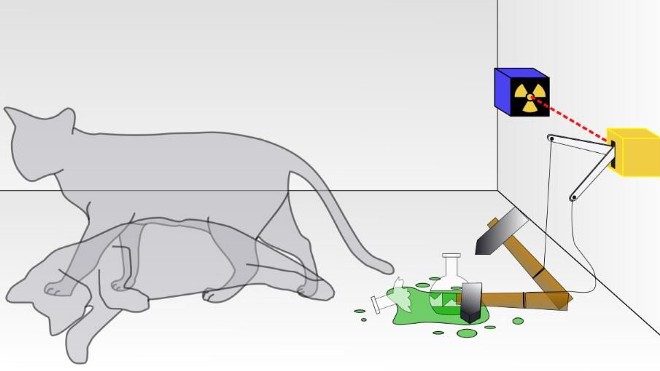Catholic Bloggers Don’t Understand Catholic Doctrine

Following up on my post about the preventable death of Savita Halappanavar due to anti-choice theology, three Catholic blogs at Patheos have weighed in: “Savita’s tragic death could have been avoided“, “Savita’s Death and Common Sense“, “and Savita Halappanavar’s Death“.
All three of them take the same position: that Savita’s death was an avoidable and tragic accident, that her life could have been saved in a way consistent with Catholic law. Here’s how one of them puts it:
Even if you are not well-versed on Catholic teaching, as apparently whoever spoke to the Halappanavars was not, just thinking this one through — if people do that, anymore — should have answered the question. Inducing the delivery of a baby at 17 weeks would likely insure its death… [but] still would allow for God’s determining hand in this life.
…my understanding of Catholic teaching is that this inducement could have been performed, and whoever told Savita and her husband that what they were asking for was impossible because of the “Catholic country” frankly did not know what he or she was talking about.
That sounds very reasonable and compassionate. So here’s my problem with it: If Catholic teaching allows for the inducement of a nonviable fetus to save a woman’s life, how come the Catholic church doesn’t know that?
The reason I ask is that, in every case I’m aware of where the Catholic church has had the power to set law or policy, the policy they create is the same one that killed Savita: that doctors can’t do anything as long as there’s a fetal heartbeat, even if the woman is dying before their eyes.
Take the well-known case from Phoenix in 2009, where a Catholic nun on a hospital ethics committee gave permission to perform an abortion on a woman whose pregnancy was killing her, and was then excommunicated for that. No one who commented on the case seemed to think that inducing labor was an alternative. The bishop’s letter didn’t mention this as something they could have done instead. As some of the coverage at the time shows, this supposed loophole isn’t even known to Catholic theologians:
“They were in quite a dilemma,” says Lisa Sowle Cahill, who teaches Catholic theology at Boston College. “There was no good way out of it. The official church position would mandate that the correct solution would be to let both the mother and the child die.“
This isn’t the only such case, either. I wrote in 2011 about miscarriage management in Catholic hospitals. In these cases, doctors wrote about their agonies of conscience when Catholic ethics committees denied them permission to save a dying woman as long as there was a fetal heartbeat – exactly what happened to Savita!
I’ll never forget this; it was awful — I had one of my partners accept this patient at 19 weeks. The pregnancy was in the vagina. It was over… And so he takes this patient and transferred her to [our] tertiary medical center, which I was just livid about, and, you know, “we’re going to save the pregnancy.” So of course, I’m on call when she gets septic, and she’s septic to the point that I’m pushing pressors on labor and delivery trying to keep her blood pressure up, and I have her on a cooling blanket because she’s 106 degrees. And I needed to get everything out. And so I put the ultrasound machine on and there was still a heartbeat, and [the ethics committee] wouldn’t let me because there was still a heartbeat. This woman is dying before our eyes.
As I wrote at the time, citing other examples from that paper:
In another case where a woman was septic and hemorrhaging, the doctor was told by a colleague to put her in a bed and try to keep her alive with blood transfusions until the fetus died. Another doctor sent her critically ill patient to the nearest secular hospital, a 90-mile ambulance ride, because she judged that this long and hazardous journey would result in her getting a needed abortion more quickly than waiting for the ethics committee at her own hospital to give permission.
And then there’s El Salvador, where the government passed a draconian anti-abortion law after heavy lobbying from the Catholic church (which included sending in busloads of trained schoolchildren). The law says that as long as the fetus is biologically alive, no abortion is permitted, no matter the circumstances. This means that even in cases of ectopic pregnancy, doctors can’t do anything until the woman’s Fallopian tube has burst:
According to Sara Valdés, the director of the Hospital de Maternidad, women coming to her hospital with ectopic pregnancies cannot be operated on until fetal death or a rupture of the fallopian tube. “That is our policy,” Valdés told me. She was plainly in torment about the subject. “That is the law,” she said. “The D.A.’s office told us that this was the law.”
…The women are sent to the dispensary, where they receive a daily ultrasound to check the fetus. “If it’s dead, we can operate,” she said. “Before that, we can’t.” If there is a persistent fetal heartbeat, then they have to wait for the fallopian tube to rupture.
So, Catholic bloggers, I ask you: If this exception is known to you, why don’t Catholic ethics committees at church-run hospitals know about it? Why don’t theologians who teach at Catholic colleges know about it? Why don’t Catholic bishops know about it? Why don’t Catholic-dominated countries that enact church-supported laws leave this loophole open? And if you’re certain that the church’s “official” position on paper permits this exception, then why do these horror stories keep happening whenever the church has its way?
Image credit: John Prassas, released under CC BY-SA 2.0 license





